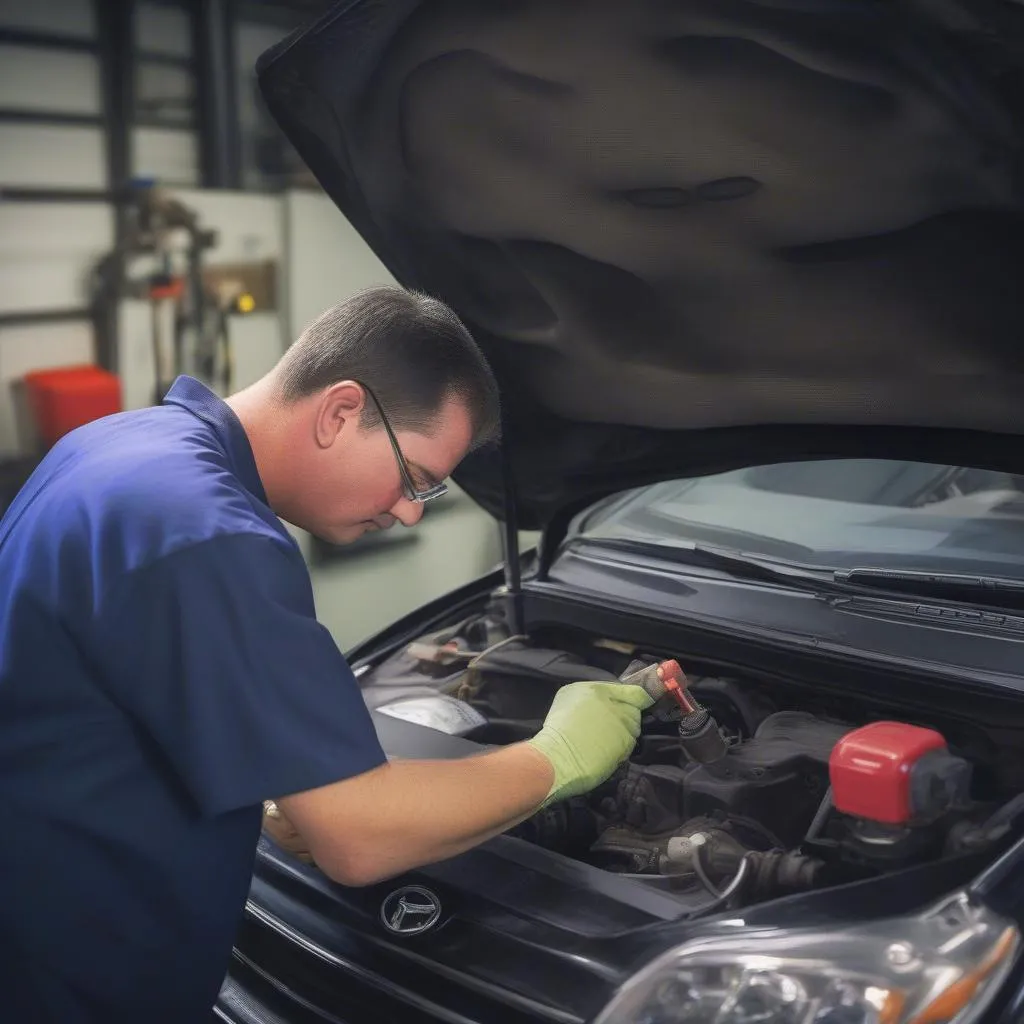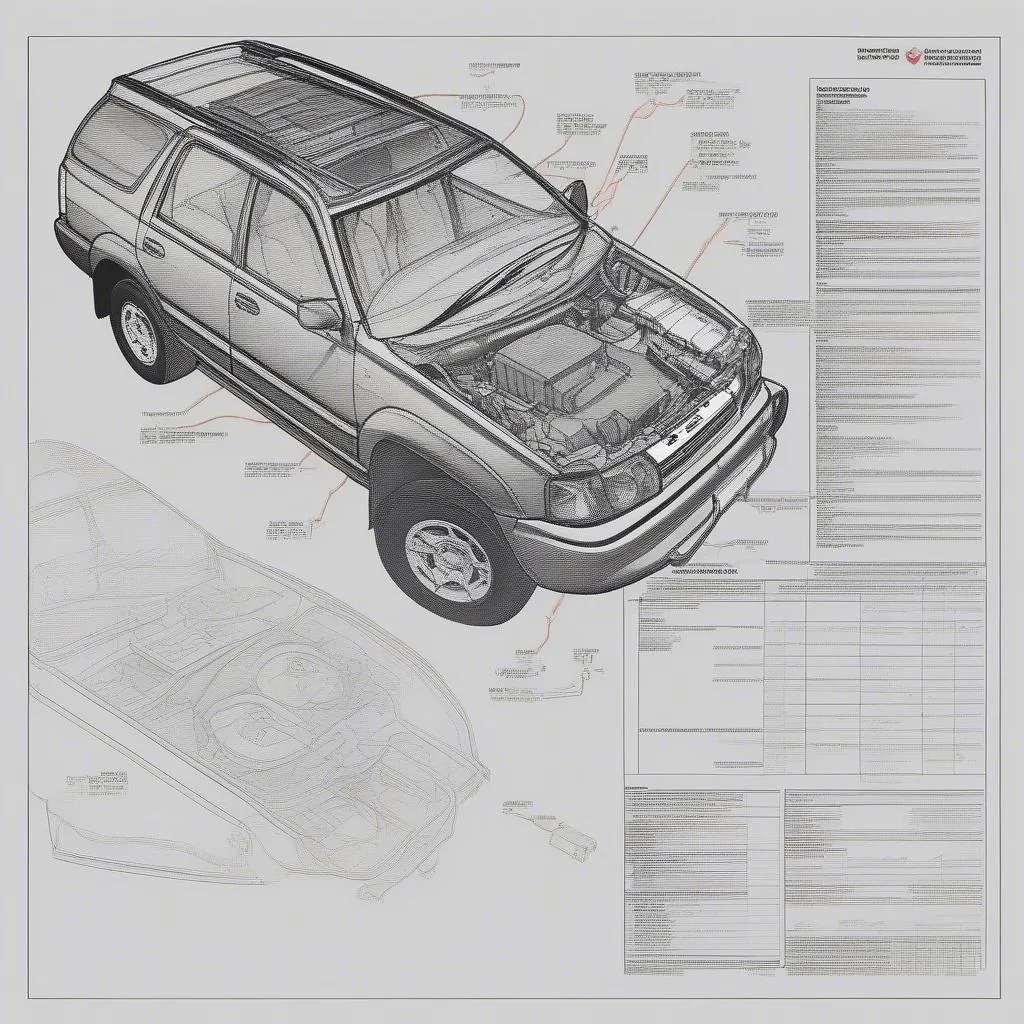Imagine this: you’re driving your Toyota down the highway, enjoying the open road, when suddenly the engine light pops on. Panic sets in, and you start wondering what’s wrong. This is a common scenario, and often, it’s a code like P0401 that’s causing the trouble. But don’t worry – we’re here to help you understand what this code means and how to tackle it.
What Does OBD-II Code P0401 Mean?
OBD-II code P0401, often seen as “P0401 – Exhaust Gas Recirculation (EGR) Flow Insufficient” is a diagnostic trouble code related to your Toyota’s exhaust gas recirculation (EGR) system. In simpler terms, it means the computer in your car has detected that the EGR system isn’t working as efficiently as it should.
Understanding the EGR System
Think of the EGR system as a recycling program for your car’s exhaust gases. Instead of releasing all the exhaust gases directly into the atmosphere, the EGR system routes a portion of them back into the engine’s intake manifold. This helps to lower combustion temperatures and reduce harmful emissions.
P0401 and Its Impact on Your Toyota
When the EGR system isn’t functioning correctly, it can lead to several issues, including:
- Reduced Fuel Efficiency: The EGR system plays a role in optimizing fuel combustion. A malfunctioning system can lead to lower fuel efficiency, costing you more at the pump.
- Engine Performance Issues: The EGR system affects how efficiently your engine runs. A malfunctioning system can result in sluggish acceleration, rough idling, and even engine misfires.
- Increased Emissions: The primary purpose of the EGR system is to reduce harmful emissions. A faulty EGR system can cause your car to emit more pollutants, potentially impacting air quality.
Causes of OBD-II Code P0401 on Toyota Vehicles
Here are some common reasons why your Toyota might throw the P0401 code:
- EGR Valve Stuck Open or Closed: The EGR valve is responsible for controlling the amount of exhaust gas recirculated into the engine. If the valve is stuck in an open or closed position, it can prevent the EGR system from functioning properly.
- Clogged EGR Valve or Passageways: Over time, carbon buildup can clog the EGR valve and its passageways, restricting exhaust gas flow and causing the P0401 code.
- Defective EGR Sensor: The EGR sensor monitors the flow of exhaust gases through the system. A faulty sensor can provide inaccurate readings to the computer, leading to the P0401 code.
- Vacuum Leak: A vacuum leak in the EGR system can disrupt the pressure needed for proper EGR operation, causing the code to appear.
- Faulty EGR Solenoid: The EGR solenoid controls the EGR valve’s operation. A malfunctioning solenoid can prevent the valve from opening or closing properly, resulting in the P0401 code.
Diagnosing and Repairing OBD-II Code P0401
The best way to determine the root cause of the P0401 code is to perform a thorough diagnosis. Here’s how:
- Check for Other Codes: Start by scanning your vehicle’s computer system with a code reader like a Dealer Scanner. This will help determine if there are any other codes present that could be related to the P0401 code.
- Inspect the EGR System: Visually inspect the EGR valve, passageways, and sensor for any signs of carbon buildup, damage, or leaks.
- Test the EGR Valve: Use a vacuum pump or manual actuator to test the EGR valve’s operation. Verify it opens and closes smoothly.
- Check the Vacuum Lines: Inspect all the vacuum lines in the EGR system for leaks.
- Test the EGR Sensor: Use a multimeter to test the EGR sensor’s resistance and output voltage.
Common Questions About OBD-II Code P0401 on Toyota Vehicles
Q: Can I drive my Toyota with the P0401 code?
A: While you can drive your Toyota with the P0401 code, it’s not recommended. As mentioned earlier, a faulty EGR system can impact your car’s performance and emissions. Driving with a malfunctioning EGR system can lead to further damage or worsen existing problems. It’s best to address the issue as soon as possible.
Q: How much does it cost to repair the P0401 code?
A: The repair cost can vary depending on the cause of the problem and the specific model of your Toyota. However, the repair typically involves replacing the EGR valve, sensor, or other components. The cost can range from a few hundred dollars to over a thousand dollars.
Q: Can I clean the EGR valve myself?
A: Yes, it’s possible to clean the EGR valve yourself. However, it’s crucial to consult your Toyota’s repair manual or a reputable online resource for detailed instructions. Cleaning the EGR valve requires special tools and expertise. If you’re not comfortable doing it yourself, it’s best to seek professional help.
Q: How can I prevent the P0401 code from appearing again?
A: While you can’t completely prevent the P0401 code from appearing, you can minimize the risk by following these recommendations:
- Use high-quality fuel: Using high-quality fuel can help reduce carbon buildup in the EGR system.
- Regular maintenance: Follow your Toyota’s recommended maintenance schedule, including replacing filters and fluids as needed.
- Consider adding an EGR valve cleaner: Adding an EGR valve cleaner to your fuel tank can help clean the EGR valve and prevent carbon buildup.
Conclusion
OBD-II code P0401 can be a frustrating experience for any Toyota owner. However, understanding the cause of the code and how to diagnose it can help you address the issue effectively.
Don’t hesitate to seek professional help if you’re not comfortable tackling the repair yourself. Remember, a well-functioning EGR system is crucial for your Toyota’s performance, fuel efficiency, and emissions.
 EGR Valve Cleaning
EGR Valve Cleaning
 Toyota Repair Manual
Toyota Repair Manual
If you need assistance with installing diagnostics tools or have any other questions regarding your Toyota’s electrical system, reach out to us via Whatsapp: +84767531508. Our expert technicians are available 24/7 to assist you.
We hope this article has been helpful! If you have any further questions or would like to know more about other OBD-II codes, feel free to leave a comment below. Don’t forget to share this article with your fellow Toyota owners who might be experiencing similar issues!